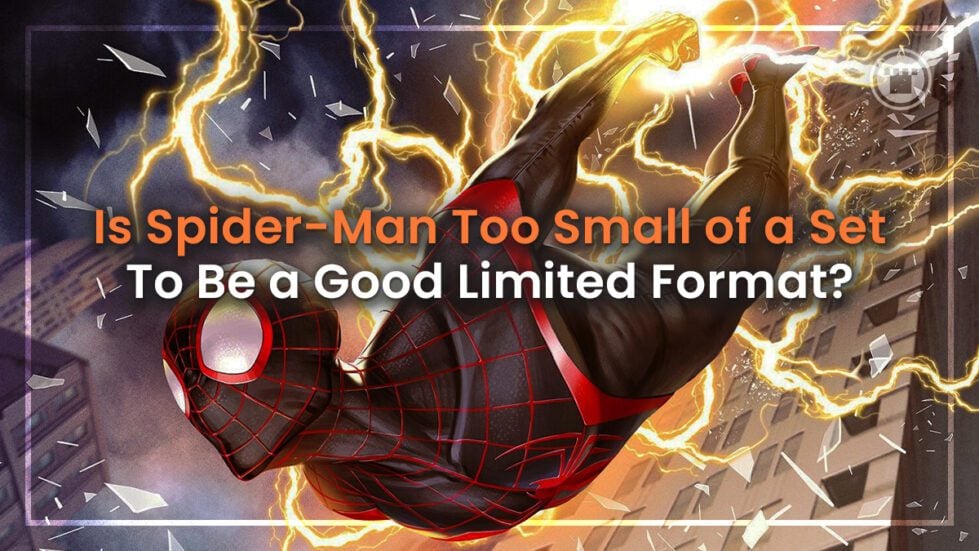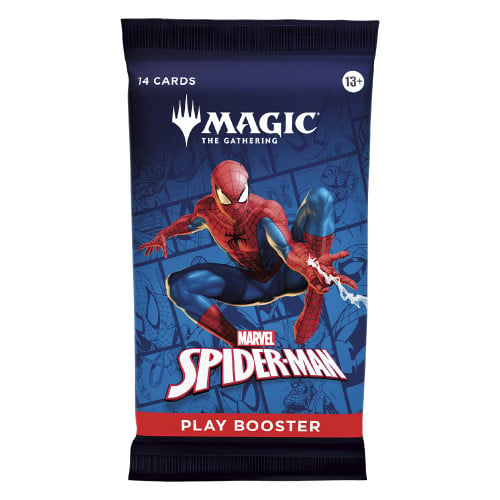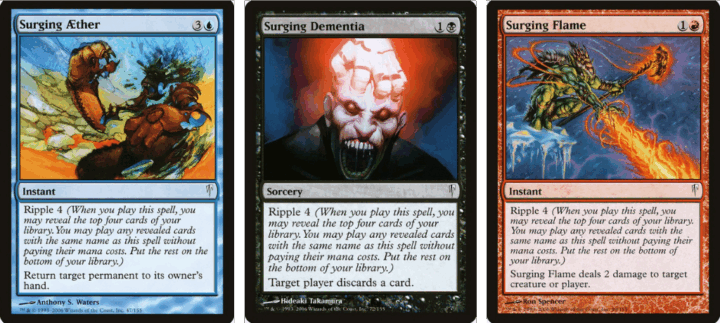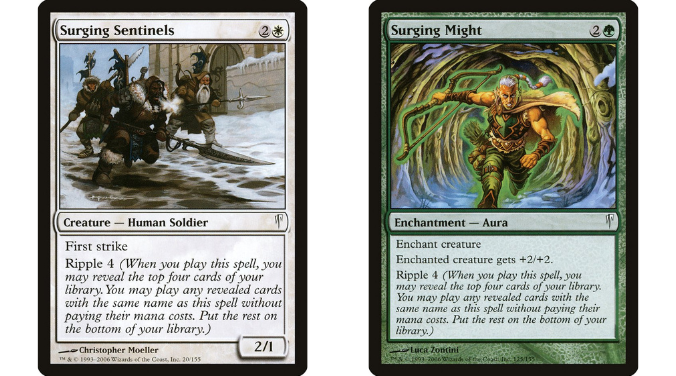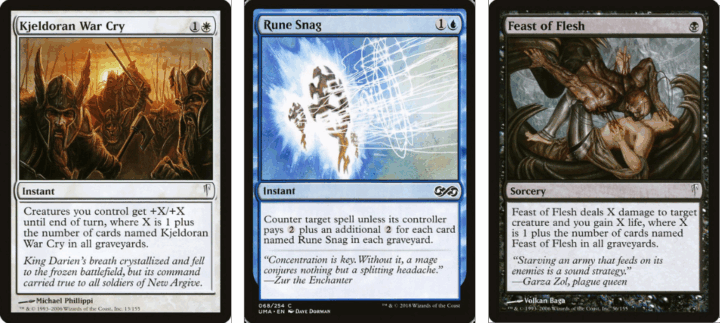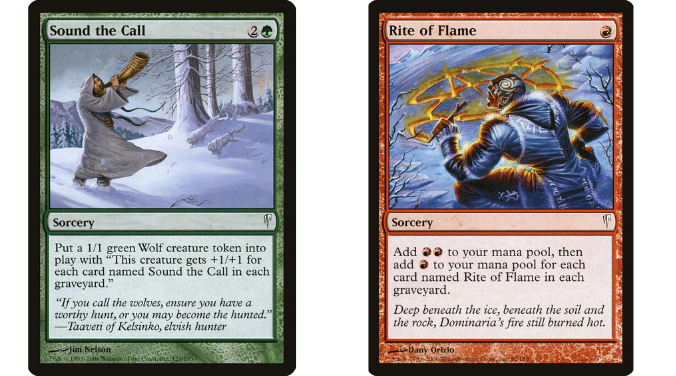Universes Beyond: Spider-Man releases on September 26th, and we’re already very deep into preview season. The set looks really exciting, featuring some cool new mechanics, and top-down designs of prominent characters and storylines from the Spider-Man franchise.
With only 191 cards, it also happens to be the smallest draftable Standard-release set we’ve seen since 2015’s Fate Reforged. And unlike Fate Reforged, which was intended to be drafted alongside Khans of Tarkir booster packs, Spider-Man is meant to be drafted alone.
We have to go back in time even further to find the last time Wizards of the Coast designed a small set to be drafted alone – to 2006’s Coldsnap. That’s troubling company to keep, because Coldsnap draft was probably the worst Limited format of all time. At least, when it comes to sets that Wizards of the Coast consciously designed for Limited play.

In this article, I’m going to discuss what exactly made Coldsnap so terrible, and I’ll discuss whether or not I think Spider-Man has any of the same problems.
COLDSNAP PROBLEM #1: BAD REPLAY VALUE
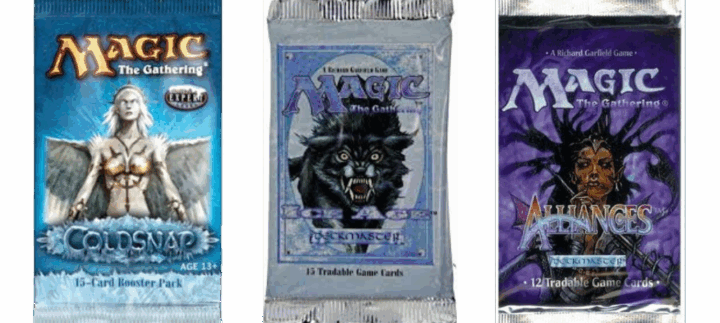
One of these is not like the other…
In 2007, Coldsnap was released as the final set in Ice Age Block. Magic used to be released in a series of three sets that were linked by both lore and mechanics, and these were called “Blocks.” The first set in a block was usually large (around 300 cards), while the next two sets were typically smaller (around 150 cards). When a block was complete, drafts would involve drafting with one pack from each set.
So, that might sound like Coldsnap being so small was the norm at the time, but there’s one big problem – the first two sets of Ice Age Block came out in 1995 and 1996. Homelands was once considered as part of the Block, but the set was such a critical and financial failure that they wanted a do-over. So, more than a decade later, Wizards of the Coast decided to add a third small set to complete the Block – Coldsnap.
Limited formats from this era of Magic history usually involved drafting one pack of each of the sets in a Block. But in this case, this small set had to be drafted alone since both Ice Age and Alliances were long out of print. This meant that you drafted three packs from a single set that only had 155 cards.
Even without knowing what any of those cards actually look like, there is already one really big problem for a small set in Limited – replay value. If you’re drafting three packs of the same tiny set you’re going to start seeing the same cards over and over again and the format will quickly become stale just a few drafts in.
COLDSNAP PROBLEM #2: COLLECT ‘EM ALL CARDS
One of the most baffling things about Coldsnap is that instead of trying to find ways to mitigate against the very small size of the set, Wizards of the Coast chose to just lean into the set’s small size with “Collect ‘em All” commons. In other words, cards that get better the more copies of them you have.
They even included a “Collect ‘em All” mechanic called Ripple. It triggers when you cast a spell with it, and then you look at the top 4 cards of your library and if there are any copies of the Ripple card in the top 4, you just got to cast them for free. Basically, it’s a very particular form of Cascade. And, should you hit other copies, they Ripple too.
Between the huge quantity of these Commons you would see every draft and the reduced deck size in Limited, it wasn’t uncommon to see someone cast Surging Sentinels on turn three and end up with 3+ of them on the board. That’s an insane turn 3 in Limited.
You’d think that one cycle of “Collect ‘em All” commons was enough – but there are actually two of them in the set. This cycle all has a base effect, and then the effect gets better the more copies of that card you have in the graveyard. In Limited, Kjeldoran War Cry, Feast of Flesh, and Sound the Call were all way too good when you inevitably got multiples of them.
Basically, many drafts came down to who managed to get the most copies of the cards in these cycles, especially the Ripple spells. That doesn’t exactly make for a fun and interesting format.
DOES SPIDER-MAN HAVE EITHER OF THESE PROBLEMS?
Thankfully, it looks like Spider-Man only suffers from Problem #1, and it shouldn’t be quite as pronounced either. After all, Spider-Man has 191 cards to Coldsnap’s 155. However, I don’t think that puts this set in the clear.
Today’s sets have 280+ cards and they often have a ton of replay value as a result. There are just so many different things you can do in every format.
Spider-Man simply won’t have as much replay value as a typical set. So, it’s just a fact that you’re going to see more of the same cards over and over again as you grind drafts in the format. While having to put up with “collect ‘em all” cards won’t be a problem here, I do think drafting such a small set is going to result in a less positive experience overall.
They are introducing a new way to draft for this set – Pick Two Draft, which appears to be an attempt at finding a way to make drafting this small set work better. This is a format where instead of picking only one card at a time, you pick two at a time.
However, I think they could have partially solved this problem entirely if there was a bonus sheet slot in every pack. Alas, a card from the Source Material bonus sheet only appears in one out of every 24 Play Boosters.
SO, IS THIS LIMITED FORMAT GOING TO BE GOOD?
While I do have some serious concerns about this set’s replay value, I’m hopeful that Wizards of the Coast has learned from the mistakes of Coldsnap. It’s always impossible to declare how good a Limited format will be before actually playing the format. So for now, I’m withholding judgment and I’m cautiously optimistic that the format will be a good one, even if it does have less replay value.
END STEP
What do you think? Does Spider-Man look like a good Limited format to you? Let me know over on X or Bluesky.

Jacob has been playing Magic for the better part of 24 years, and he especially loves playing Magic’s Limited formats. He also holds a PhD in history from the University of Oklahoma. In 2015, he started his YouTube channel, “Nizzahon Magic,” where he combines his interests with many videos covering Magic’s competitive history. When he’s not playing Magic or making Magic content, he can be found teaching college-level history courses or caring for a menagerie of pets with his wife.

